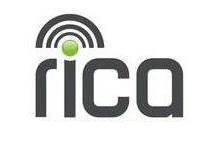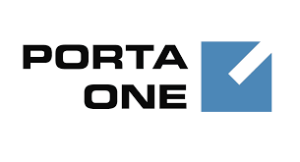
Internet and computer jargon can sound like a foreign language, be difficult to understand and feel intimidating to many people. Our ultimate glossary explains all the words and phrases and will be your go-to tech encyclopedia.
You might have heard your IT consultant or someone you know who is a tech wizard speak about ‘clearing your cache’ or ‘Javascript and the LAMP stack,‘ and you had no idea what they were talking about. We’ve compiled a comprehensive glossary to help you understand computer and internet jargon, in clear and simple English.
Telecommunications terminology
- ADSL: Asymmetric Digital Subscriber Line changes existing twisted copper pairs between a telephone exchange and a telephone socket into a high-speed digital line, allowing broadband access which means faster data transmission. Uploading speed on ADSL is slower than the downloading speed. ADSL uses frequencies that are not used by a voice telephone call. It can usually only be distributed over short distances from the telephone exchange.
- Band: The frequencies in which a network operates are called bands and are usually GSM900 and GSM1800 frequencies in most countries. However, in the USA and Canada, the frequency used is GSM1900 which makes it important to check that your phone is compatible before you travel there. There are dual-band and triband phones that have GSM900, GSM1800 (and GSM1900) mobile networks.
- Bandwidth: Bandwidth is the amount of data that can be sent over a network or modem and it’s measured in bits per second (bps). The larger the bandwidth, the more bps which means a faster internet connection.
- Capped internet: Capped internet means you receive a set amount of data for the month or another specific period of time and once this has been used, you will need to purchase more. When purchasing data, you get a set amount of gigabytes in bandwidth. You may pay slightly more expensive rates for Capped than you would for Uncapped.
- Uncapped internet: Internet that has no limit on the amount of data per month or another specific time period. This means you can access the internet any time of the day for however long you want. An uncapped package is ideal for high usage and downloading.
- Cloud communication: Cloud communications are a package of communication methods such as internet-based voice and data communications and telecommunications applications. These communication methods are hosted by a third party or through the cloud. Cloud services are a broader aspect of cloud communication and act as the primary data center for enterprises.
- Convergence: refers to the trend whereby voice, data, and media, including movies, are increasingly carried by the same digital technologies Convergence Bill - partly that Icasa could retain a percentage of the billion rands in license fees that it collects every year to fund its expanding activities.
- Fiber Optic Broadband: This is a type of broadband connection that uses fibre optic cables to deliver data to homes and businesses. There are a number of types of fibre connections, listed below, that can deliver incredibly fast speeds of up to 1000Mbps.
- Fibre Router: A fibre router is a device that connects the fibre-internet through wired or Wi-Fi connectivity.
- Firewall: This is important software to have as it blocks or restricts unwanted traffic from hackers and viruses. There are different firewalls such as small antivirus software packages and anti-spyware software.
- FTTH: Fibre to The Home is the process of communication where signals are sent from the operator’s switching equipment through a fibre optic that is installed in your home. It’s also known as FTTP which means Fibre To The Premises.\
- FTTN: Fibre to the Node provides an internet connection to many customers as long as they remain within a certain radius. The proximity of the customer to the node determines the rate they pay for data.
- FTTC: This stands for Fibre To The Curb or Fibre To The Cabinet. This is an installation process of optical fibre cables to the curbs or roadside cabinets near an office space or home, generally containing a DSLAM, from where the final connection to the customer uses VDSL2 technology.
- ICASA: Independent Communications Authority of South Africa. ICASA is responsible for regulating the telecommunications, broadcasting and postal industries in the public interest and ensure affordable services of high quality for all South Africans. It also issues licenses to telecommunications and broadcasting service providers, enforces compliance with rules and regulations, protects consumers from unfair business practices and poor quality services, hears and decides on disputes and complaints brought against licensees, and controls and manages the effective use of radio frequency spectrum.
- Infrastructure Provider: This is a company that builds the infrastructure needed to carry internet bandwidth such as Fibre, LTE and ADSL. These are companies such as Telkom who provided the traditional copper telephone lines and converted them into ADSL lines.
- IP Address: An Internet Protocol address (IP) is a numerical label given to each device, such as a cellphone or computer, that includes information about the location of that device on the internet.
- ISDN: Integrated Services Digital Network is a digital telecommunication service that provides better call quality, a faster connection, and DDI facilities (the integration of DNS, DHCP, and IPAM into a unified solution). ISDN is provided to connect to a customer’s PBX (see below).
- ISP: An Internet Service Provider (ISP) is a company or public organization that plugs users into the internet as well as providing services such as email, web page hosting and web page access. A monthly fee is paid for internet connection provided by an ISP. ISPs are generally interconnected to one another at network access points which means that smaller ISPs pay larger ISPs for their access to the internet.
- Licensed wireless/Microwave wireless: A solution that connects two locations via a wireless radio link. It is a point to point solution provided by ISPs when fibre is not an option. This is a very stable connection as it is not shared by various users. Also known as point to point wireless.
- Packet: A group of binary digits switched as a whole - for instance, a file transfer over a packet-switched network would require many steps. These steps are: 1) the data file would be broken down into smaller `packets` of information 2) each packet of information is assigned a code that enables it to be sent to the correct location and, once at that location, for the network to reassemble the packets of information into their original form.
- Packet Switched Network - A digital data transmission network that uses packet switching technology.
- Packet Switching - Refers to protocols in which messages are divided into packets before they are sent. Each packet is then transmitted individually and can even follow different routes to its destination. Once all the packets forming a message arrive at the destination, they are recompiled into the original message.
- SDSL: SDSL stands for Symmetrical Digital Subscriber Line and is a type of connection that provides the same speed for both uploads and downloads, unlike ADSL.
- Speed: The transfer rate of a broadband connection is commonly known as the speed. Broadband speed is measured in kilobytes per second (Kbps), megabytes per second (Mbps) or gigabytes per second (Gbps), which is the fastest. Both consumers and businesses want a broadband connection with a faster downloading than uploading speed.
- Throttling: Throttling refers to internet service providers deliberately slowing internet connections, generally during peak broadband usage time. It’s also used against customers who have been deemed to have overstepped their usage cap.\
- Wi-Fi: Wi-Fi doesn’t actually stand for anything, although it is a trademarked name owned by the Wi-Fi Alliance. Wi-Fi is a standard for connecting devices using radio waves broadcast from a Wi-Fi router. This is a device which detects and deciphers the waves, and then sends back data to the router. It is similar to an AM/ FM radio but Wi-Fi is a two-way communication channel.
Voice Communications terminology
- CCITT: Consultative Committee on International Telegraph and Telephone. The principle of international standards-writing body for digital telecom networks (ISDN).
- Cloud calling: This is where voice calling services are offered through a third-party host. Also known as cloud telephony.
- Decentralized call center: Also known as a cloud call center. This is where the call center relies far more heavily on cloud capabilities and less on hardware to manage their call center. Hosting the call center software online allows staff to be located anywhere, as long as they have a good internet connection.
- Exchange: refers to a telephone switching center.
- Extension: an additional telephone connected to a line.
- IP telephony: enables voice, data, and video to be routed via a single cable over a LAN, WAN or Internet
- IVR: Interactive Voice Response. A generic term for transaction systems allowing phone callers to use an ordinary telephone to interact with a computer through speech or dialed instructions. Each response by the caller triggers another recorded message until the transaction is completed.
- PBX: PBX is the improved version of Private Automatic Branch Exchange (PABX)and is a technology used by call centers and other large organizations. PBX allows a single access number to have several lines for outside callers while still giving a range of external lines to internal callers. PBX automatically does all the switching needed for making internal calls between extensions within an organization and gives a connection between extensions and external phone lines.
- Latency: This represents the time delay before the transfer of data begins following the instruction for its transfer.
- Redundancy: The term used to describe the process through which additional or alternate instances of network devices, equipment and communication mediums are installed within network infrastructure. It is a method for ensuring network availability in case of a network device or path failure and unavailability.
- VoIP: VoIP stands for Voice over Internet Protocol and is a method of using the internet to make and receive telephone calls. When using VoIP, a person's voice is transmitted into digital data which is then fragmented into packets which are sent via the internet.
Internet and website terminology
- Add-ons: An add-on, which can also be called a plug-in or extension, is a software application that runs within another programme to enhance that programme’s performance. Web browsers like Google will often have add-ons such as Google Translate or Adblock Plus.
- Adware: Adware is free software that includes adverts to generate revenue. Adware isn’t a danger to the health of your computer, unlike malware.
- API: This stands for Application Programming Interface and refers to the web application builder interface. APIs provide coders with the basic materials they need to create the programme they are trying to build.
- Browser: A web browser is software, often already installed on computers and mobile devices, which convert HTML and XML computer code into a readable webpage. Many browsers can be downloaded from the internet. Popular web browsers include Chrome, Firefox, Internet Explorer, Microsoft Edge, and Safari.
- Cache: The browser cache is the storage area that gives you speedy access to the information you’ve recently used on your web browser. When visiting a website for the second time, it will usually load faster because some of the information from the website has been stored in the cache or in the cloud.
- Colocation of servers: A data center facility where companies can rent space on servers. The service provided includes cooling, storage and security of the physical server. The data on the servers can then be accessed by the company using a secure login.
- CSS: This stands for Cascading Style Sheet. This is computer language, like HTML, which links with HTML to communicate how a website should be designed. Where HTML is seen as the skeleton of a webpage, CSS is seen as the flesh of the webpage, creating the webpage’s fonts, layout, colours and so much more.
- Hosting: Hosting is generally provided by a hosting service provider that builds a specialised backend computing infrastructure with the necessary coding that will recognise a website by its unique domain name and logically provided web space and storage. Hosting also includes data hosting, application or software hosting, and IT services hosting.
- HTML: Hypertext Markup Language (HTML) is the programming language of all web pages. HTML communicate with your web browser to display text and graphics in a certain style. HTML and CSS work hand-in-hand to create a fully - designed webpage.
- IMAP: Internet Message Access Protocol is an email protocol that webmail providers use to allow users to download their email to client software. IMAP is best for those who access their email from multiple devices as it synchronises via the email server better than other email protocols.
- Javascript: Javascript, like HTML, is a computer programming language used to create interactive effects within browsers. Javascript enables calculators, quizzes, animated graphics, and other special effects to perform on the web browser. Javascript was developed by Netscape.
- LAMP: LAMP is the acronym for the four most basic software technologies used to create a website. L stands for Linux which is an operating system. A is Apache, a web server software. M stands for MySQL which is a database management system and P is for PHP which is another web scripting language.
- Malware: Malware is short for malicious software that can damage the health of your computer. This is often used by hackers and includes viruses, trojans, keyloggers, zombie programmes, and any other software that will damage your computer. Malware is designed to either vandalise your computer, steal private information, control your computer remotely, or manipulate you as the user to purchase something.
- POP3: Post Office Protocol 3 (POP3) is an email protocol which is used to access emails from a single system. It deletes mail from the server after downloading, making it unwieldy to synchronise activity across multiple devices. Webmail services allow access to users via POP3.
- RAM: This is the Random Access Memory of your device and it gives the user quick access to random information. The better and larger the RAM on a device, the quicker it will run - meaning searching for information on your device will be easier.
- SaaS: This stands for Software as a Service and is a software delivery method where software and data are centrally hosted on the cloud or by a third party to make this software and data available to customers over the internet. The third party or the cloud provides customers with a network-based access to a single copy of an application that the provider created specifically for SaaS distribution.
- VPN: Virtual Private Network is simply a way of securely accessing resources on a network by connecting to a remote access server through the internet. It is used to avoid eavesdropping by hackers. A VPN also allows you to hide your identity while online which is recommended when connecting to an untrusted network, especially when using a company device.
- WAP: WAP is Wireless Application Protocol and is a worldwide, open standard for accessing online services through mobile devices. It gives you text-based information from the web in a format that is easy for a mobile screen to display and is quick to download.
- WASP: WASP is the acronym for Wireless Application Service Provider. It allows access to internet-based applications, services and software from wireless devices such as smartphones, tablets and laptops. WASP services are generally targeted for business users and include services such as constant system monitoring, diagnostics and resolution, and text formatting for various devices.
- WLAN: This stands for Wireless Local Area Network and allows you to wirelessly connect to your email and internet at speeds of up to 11,000MB.
As you can see, the world of computers, technology, and the internet has a vast range of words. If you think there’s another term you aren't familiar with and think should be in this glossary, let us know.
For all forward-thinking communication and internet solutions, developments and insights, subscribe to our blog.







